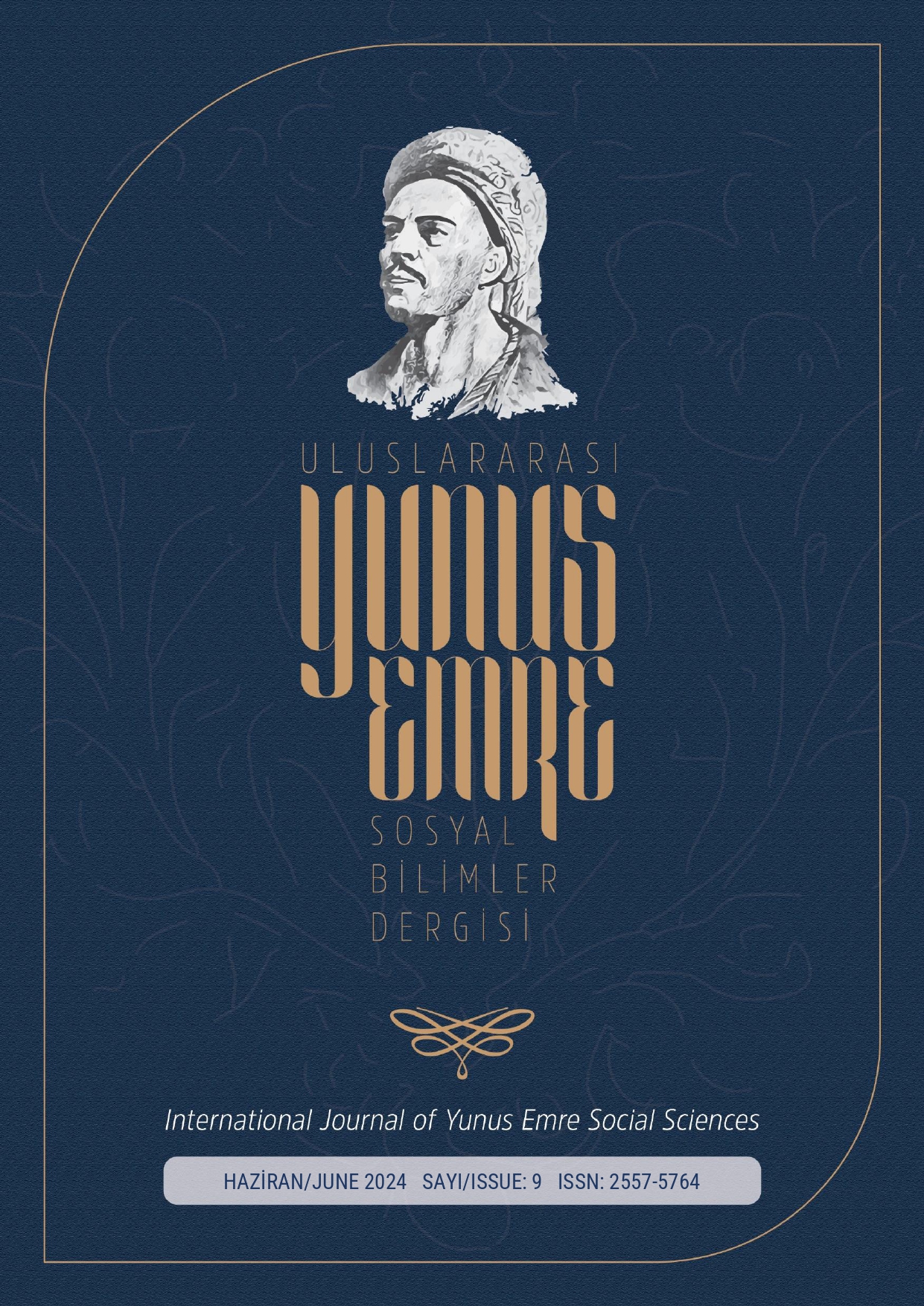Author :
Abstract
Üsküdarlı Talat, 1858-1926 yılları arasında yaşamış divan edebiyatının son temsilcilerindendir. Osmanlı Devleti’nin son dönemlerine şahitlik etmiş, Cumhuriyet’in ilk yıllarını yaşamış bir şairdir. Evinin yanmasıyla birçok eseri yok olmuştur. Fakat günümüze devrinin matbuatında yayımlanmış ve ailesinin elinde bulunan yayımlanmamış birçok şiiri kalmıştır. Bu şiirlerin önemli bölümü tarih düşürme manzumeleridir. Tarih düşürme, ebced alfabesindeki harflerin sayı değerleri kullanılarak yapılan bir edebi sanattır. Tarih düşürmede bir olayın meydana geliş tarihi; bir kelime, cümle, mısra veya beyitteki harflerin ebced değerlerinin toplanmasıyla bulunur. Talat’ın tespit edilen 159 tarih manzumesi vardır. Çoğunluğu kıta nazım şekliyledir. Talat’ın tarihlerinin konuları; vefatlar, doğumlar, evlenmeler, sünnetler, tarihî olaylar, tabiat olayları, imar ve tamir işleri, tayinler, terfiler, tebriklerdir. Tarihlerin çoğu hicrî takvime göre düşürülmüştür. Fakat az sayıda rûmî ve mîlâdî takvime göre düşürülmüş olan da vardır. Aruz vezniyle yazılmış bu manzumelerde klasik Türk şiirinin mazmunlarına, telmih, teşbih, istiare, tevriye gibi edebî sanatlara başarıyla yer verilmiştir. Talat’ın tarih manzumeleri yaşadığı devrin tarihî, kültürel ve sosyal hayatına ışık tuttuğu gibi, içinde bulunduğu edebî çevreyi de tanıtır. Ayrıca bu tarih manzumeleri, onun düşünce dünyasındaki değişiklikleri yansıtması açısından da oldukça önemlidir. Bu makalede önce Üsküdarlı Talat’tan kısaca bahsedilecek, daha sonra bir edebî sanat kabul edilen tarih düşürme hakkında bilgi verilecektir. Daha sonra Talat’ın tarih manzumeleri muhteva ve şekil yönünden incelenecektir.
Keywords
Abstract
Üsküdarlı Talat is one of the last representatives of divan literature who lived between 1858-1926. He was a poet who witnessed the last periods of the Ottoman Empire and lived through the first years of the Republic. Many of his works were destroyed when his house burned down. However, many of his unpublished poems, which were published in the periodicals of his time and in the possession of his family, have survived. An important part of these poems are poems of date reduction. Historization is a literary art made by using the numerical values of the letters in the alphabet of ebced. The date of the occurrence of an event is found by summing the ebced values of the letters in a word, sentence, verse or couplet. Talat has 159 date poems identified. Most of them are in verse form. The subjects of Talat's dates are deaths, births, marriages, circumcisions, historical events, natural events, construction and repair works, appointments, promotions, congratulations. Most of the dates were written according to the Hijri calendar. However, there are also a small number of dates written according to the Gregorian and Gregorian calendars. In these verses written in aruz meter, the mazmuns of classical Turkish poetry and literary arts such as allusion, metaphor, simile, simile, allegory and tawriye are successfully used. Talat's history verses shed light on the historical, cultural and social life of the period in which he lived, as well as the literary environment in which he lived. In addition, these history verses are also very important in terms of reflecting the changes in his world of thought. In this article, first, Üsküdarlı Talat will be briefly mentioned, and then information will be given about the literary art of date reduction. Then Talat's history verses will be analyzed in terms of content and form.





